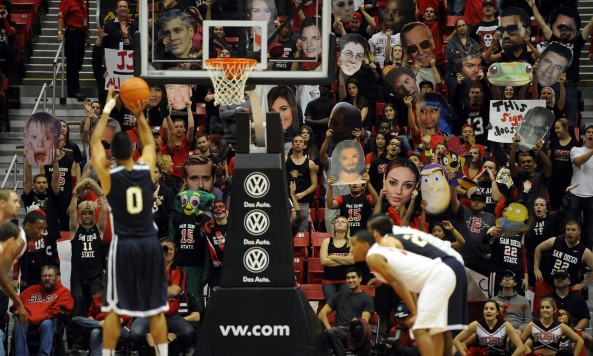The first few days of the basketball season were all about fouls. There were fouls called. Fouls discussed. Fouls written about ad nauseum. I didn't even defend the new rules on Twitter, I just stated that I could see how they would eventually lead to a more free flowing game. This led to self righteous tweets and message board comments after every game where teams paraded to the line, and after every awful blocking call. People let me know that I was an idiot and foul calls were ruining the game.
(Sports fans making snap judgments. Gosh, that's new!)
We're now 18 days into the new year and 1,024 Division I games have been played. That's a significant amount of data. So I began digging around. First, I established an "extreme" foul game as one where a single team attempted 45 or more free throws. That number came from two places. First, in the past decade that is about 2X the average number of foul shots a team attempts. Second, with my limited data mining skills, pulling out a lower number proved impossible in one of the seasons. So 45 it is.
I wanted to look at extreme games rather than "average fouls" because of the way basketball rules are structured. Early fouls don't cost as much as later fouls. First there is the bonus, and then the double bonus. If the other team is in the double bonus and your side is getting consistently dinged with hand checks 30 feet from the basket, either there's a serious coaching issue or the refs are getting paid by advertisers who want longer games. It's these types of fouls which result in 2 1/2 hour games filled with free throw commentary.
I looked at how many games were played in each of the past 10 years that had a team reach that extreme foul shot limit. That looks like this.
Eighteen days into the season and we already have more extreme games than last year, and we might be passing 2004-05 as you read this. The high was 2009-10 with 83 of those games, and this year we're on pace for about 296.
Yeah, that's a lot of fouls.
But the theory is that both the players and the referees will adjust. After all, the players have been hand checking since they picked up a basketball, and the refs have been ignoring hand-checking since before their hair fell out. What I want to know is if there's evidence of this adjustment.
Using that same dataset of extreme free throw games, I arranged this year's data sequentially. This gave me the probability on each day of the season for an extreme game to occur. Then I smoothed that a bit by calculating 3-day moving average. A moving average is commonly used with time series data to smooth out short-term fluctuations and highlight longer-term trends or cycles. Eighteen days isn't long term, but it does provide an interesting snapshot as to what is going on with fouls. This graph is the % chance of an extreme game, with the beginning of the season on the left, and the line moving forward in time.
So with extreme games, it appears, the likelihood has dropped dramatically since the beginning of the season. The interesting thing will be charting this going forward. Where will the players and refs find equilibrium? And how will that equilibrium affect the game?























